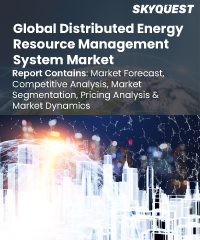
Report ID: SQMIG10B2064

Report ID:
SQMIG10B2064 |
Region:
Global |
Published Date: August, 2024
Pages:
178
|
Tables:
64 |
Figures:
75
Distributed Energy Resource Management System Market Drivers
Increasing Adoption of Renewable Energy Sources
Advancements in Energy Storage Technologies
Distributed Energy Resource Management System Market Restraints
Complex Regulatory Environment
Lack of Interoperability and Standardization
Our industry expert will work with you to provide you with customized data in a short amount of time.
REQUEST FREE CUSTOMIZATIONWant to customize this report? This report can be personalized according to your needs. Our analysts and industry experts will work directly with you to understand your requirements and provide you with customized data in a short amount of time. We offer $1000 worth of FREE customization at the time of purchase.

Report ID: SQMIG10B2064